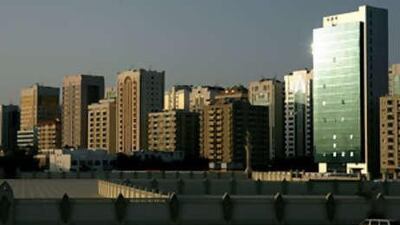ABU DHABI // A first-ever survey of families of all nationalities living in Abu Dhabi will guide government policies on education, training and social care. The survey, which began in March and is being conducted by the statistics section of the Abu Dhabi Department of Planning and Economy (DPE), will record the number of workers and jobseekers and provide far-reaching and vital information about the composition of the emirate's population.
It will not look at labour communities or single residents. Officials said yesterday that Abu Dhabi's rapid 5.6 per cent population growth had rendered the 2005 census "obsolete". After its completion next month, the new survey would provide government departments with an invaluable database of information that would influence high-level policymaking and feed in to Abu Dhabi's next population census, in 2010.
"The workforce survey will provide an integrated database about the workforce and labour market, as well as statistics about unemployment and domestic labour at family level," said Butti al Qubaisi, the assistant under secretary at the DPE's planning and statistics section. "It will also fully study characteristics of these families to draw policies and plans to help in taking decisions in this respect."
The main objective of the study is to assess rates and trends in employment and unemployment, as well as to form a clearer picture of Abu Dhabi's social, economic and demographic make-up, officials said. It would give details of those unable or unwilling to work and provide information about salary structures and average working hours for a range of occupations. The survey will also furnish vital information about the size of the workforce and its geographical and economic distribution in the emirate. Participants will be questioned on various subjects, including their educational level, skill, marital status, training history, average working hours and weekly working days.
A key aim is to help officials form educational policies that match the supply of graduates to the needs of the labour market. Abu Baker al Amoudi, the director of the DPE statistics section, called on families to co-operate with researchers by giving them accurate information. Assigned researchers will hold identity cards issued by the DPE. The survey is one of nine similar studies planned by the DPE for this year.
The Abu Dhabi population, which includes Al Ain, Al Gharbia and the Islands, stood at 1.4 million at the end 2006, one-third of the UAE's total population, and is forecast to reach 1.7 million by 2010. Emiratis make up about 20 per cent of the total population. According to the Ministry of Labour's 2007 report, more than 90 per cent of the UAE's private-sector labour force is comprised of expatriate labour. Ministry records show that 3.1 million foreign workers were employed by approximately 260,000 organisations.
The imposition of targets to boost Emirati employment has yielded mixed results, according to the Executive Council's Policy Agenda 2007-08. Since 1999, Emirati participation in the banking sector rose 300 per cent, from 1,200 employees to 4,700 - more than 26 per cent of the overall workforce in 2005. However, a similar strategy in the insurance sector resulted in only a 5.3 per cent increase in Emirati participation.


